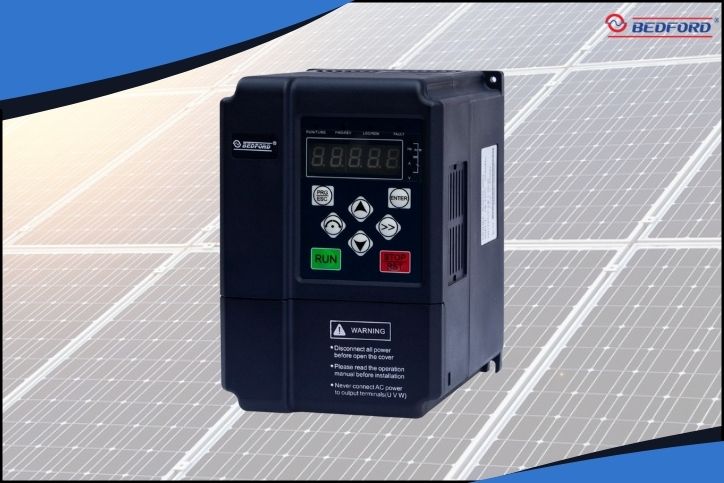A frequency inverter is an electronic device which enables the conversion of an electrical variable ‘current’. In this case, the frequency inverter transforms an AC current with a certain (fixed) frequency into a voltage with variable amplitude and frequency. In short, this results in a voltage conversion. Frequency inverters can power a wide variety of equipment, such as: three-phase motors, pumps and air-conditioners. In three-phase motors, the speed and torque of the AC motor can be controlled by varying the frequency. This control does not restrict the performance of a three-phase motor, it just improves its efficiency. Such motors are often used in industrial environments, and are especially common in the drive technology field.
Technical setup of a frequency inverter
An electronic frequency inverter consists of a rectifier, which supplies a so-called ‘intermediate DC current’, and an inverter which acts upon it. This allows the current supplied to be converted to a specified voltage.
Designs / Types
a) Volt-Hertz frequency inverter
This is technically the simplest type of frequency inverter. In this case the voltage and the frequency control follows a linear relationship. If a Volt-Herz frequency inverter is used for motor control, there are certain dependencies. The load on the motor directly affects the resultant usable speed. Where the range of speed variance is not large, or if there is no direct starting load, a Volt-Herz frequency inverter can be used for motor control.
b) Vector-controlled frequency inverter
A vector-controlled frequency inverter does not control an AC motor using a voltage/frequency ratio, but by varying the motor input frequency and voltage. An advantage of this method is optimum torque control. Vector-controlled frequency inverters offer other advantages too. For example, three-phase motors are able to make direct high-speed starts, and speeds adjustments can be more closely controlled.
Special features
Frequency inverters offering real parametric control are more than 95 per cent efficient. Many manufacturers develop high-quality electronic frequency inverters and adapt their general functions to particular applications. With LED indicators, control panels and programmable frequency inverters, many parameters and functions – such as start and stop ramps – can be effectively consumer-controlled. By standardizing individual modules frequency inverters can be integrated as a modular building blocks in existing SPS systems, or likewise accessed via serial interfaces or additional analog outputs. Installation and wiring are thus completed faster, thanks to this modular approach and the resultant design improvements.





















